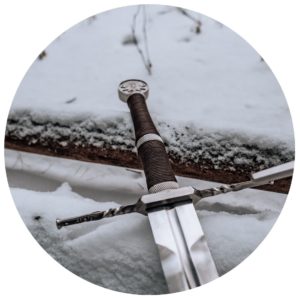The Norse God Víðarr | Vidar is mostly associated with the event of Ragnarök and the battle between the Aesir under the rule of Odin, and fire Jötnar giants.
Both sides are slain and only a few will survive. Víðarr is one of them, a son of Odin and member of the Aesir tribe. Víðarr is attested in the archaeological record from the Gosforth Cross dating back to the 11th Century. It depicts both the christian Judgement Day and possibly Víðarr fighting Fenrir at the event of Ragnarök.

We learn about Vidar slaying Fenrir in the Poetic Edda, in the Völuspa poem where it says that:
‘Then comes Sigfather’s | mighty son,
Vithar, to fight | with the foaming wolf;
In the giant’s son | does he thrust his sword
Full to the heart: | his father is avenged.’ (Translation by Bellows, 1923).
Aside from that, scholars have widely debated his role and function. Virtually no other information about his overall role is attested, except for his survival after Ragnarök. Indo-European scholar George Dumezil proposed a link to the Vedic Vishnu (Lindow, 2001, p. 314).
- Solar Blooms: Flowers, Herbs and Plants of Midsummer in Germanic and Norse Mythology
- The Wild Hunt in Norse Mythology: Echoes of the Furious Host
- Celebrating the Summer Solstice in Norse Mythology: Midsummer Magic, Fire, and Fertility
- Who Was Gullveig? Reconstructing One of the Most Mysterious Figures in Norse Mythology
- Elves in Norse Mythology: Spirits of Light, Ancestors of the Dead, and Keepers of Sacred Power

